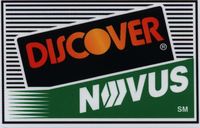Over-the-air HDTV signals look better than cable or satellite!
The switch to digital TV broadcasting has eliminated the most annoying picture distortions — snow and ghosting — that made analog off-air reception so hit-or-miss. With digital TV signals (both standard-definition and high-definition), you'll either see a crisp, ghost-free picture or no picture at all. Because local and syndicated programming may not be in high-definition, it's typical for local stations to broadcast their digital signals in standard-definition during the day, then switch to full widescreen HDTV during primetime.
Even if you've never used an off-air antenna before, there are several good reasons to consider adding one to your other TV signal sources.
Local digital TV broadcasts are everywhere: Although the widest selection of digital TV broadcasts are found in big cities, over 99% of U.S. TV households have access to at least one local digital station; 89% can get five or more stations. You can learn which stations in your area are providing digital broadcasts by visiting the TV Fool website listed below.
- Over-the-air digital reception provides the best picture quality: Cable and satellite providers offer tons of channels, but to do this they use data compression or other techniques that compromise picture quality, resulting in a "soft" image, distracting video artifacts (distortion), or both. Off-air antenna reception is the best way to enjoy HDTV programs at the full resolution the TV networks intended.
- Over-the-air signals are free: Aside from the costs to purchase and install an antenna, receiving over-the-air HDTV is free.
- Access to all your local channels: Cable and satellite TV providers may not carry all the local channels in your area, or may not offer them in high definition. Also, contract disagreements between local cable operators and local broadcasters can mean that major networks may not be available via cable TV in your area.
- Access to out-of-town channels: With the right equipment and reception conditions, some viewers may even be able to receive out-of-town channels, some of which may carry sports programs that are locally blacked out.
If you bought your HDTV anytime during the past 8 years or so, it should have a built-in tuner for receiving digital over-the-air broadcasts. If you have an older "HDTV-ready" TV that only receives analog signals, you'll need to connect it to a separate HDTV tuner.
Contact us today for a free site survey and estimate for your off air TV antenna.









